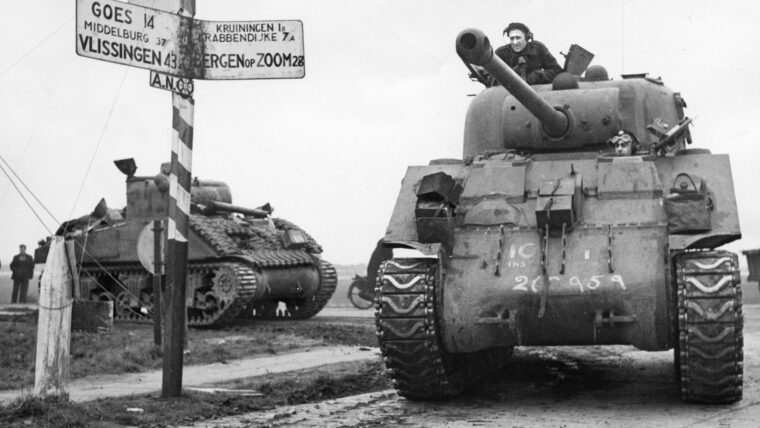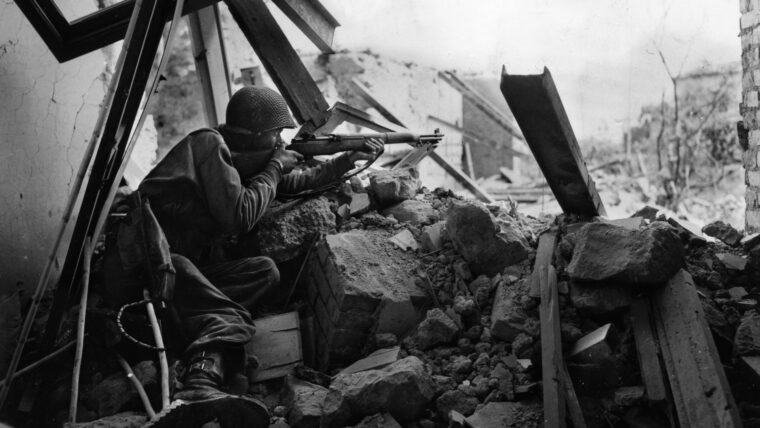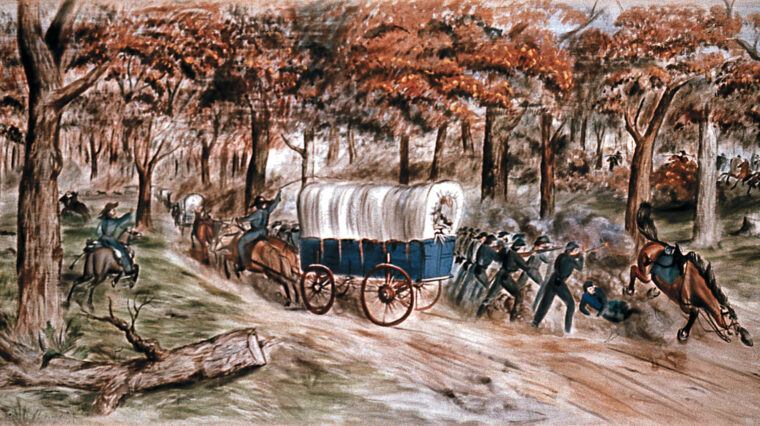
Halberds and Spontoons
By David A. NorrisPikes and most similar pole weapons disappeared from European armies by the early 1700s. After all, bayonets let each man convert his flintlock into a pike that fired bullets. Read more

Pikes and most similar pole weapons disappeared from European armies by the early 1700s. After all, bayonets let each man convert his flintlock into a pike that fired bullets. Read more

On board one of the transports headed for the island of Saipan in early June 1944, a battalion surgeon gave a group of Marines a lecture on what they could expect when they reached their destination. Read more

The Battle of Gettysburg was the turning point in the American Civil War. Various parts of the battle have been proposed as pivotal moments for the Union victory, such as the successful defense at Little Round Top or Pickett’s failed charge on the final day. Read more

When John Sassamon’s murdered body floated up under the ice of Assawompsett Pond, Plymouth Colony, in January 1675, few Puritan homesteaders could have foretold it would lead to the bloodiest war, per capita, in American history. Read more

On September 4, 1944, tanks of the British 11th Armored Division lumbered into the outskirts of Antwerp, Belgium. Read more

In the summer of 1940, the world watched with rapt attention as the citizens, airmen, sailors, and soldiers of Great Britain steeled themselves for imminent invasion by the victorious German Army. Read more

They had been staring at it for the past four months. That small, rubble-strewn town of Cisterna di Littoria in central Italy just inland from the ports of Anzio-Nettuno, had become their nemesis. Read more

It was at the grand banquet given in his honor that General William “Wild Bill” Donovan told his host, General Dai Li, that the OSS intended to work on its own in China and that he wanted no interference from the Chinese. Read more

General Dwight D. Eisenhower, the supreme Allied commander in Europe during World War II, considered General Alfonse Juin to be the best French combat general of the conflict. Read more

There was tight security and feverish activity on the dock at the Hunters Point Navy Shipyard in San Francisco Bay around 3 am on Monday, July 16, 1945. Read more

A cold rain was falling as Confederate Brig. Gen. Joseph Wheeler led his brigade of horse soldiers north from the Confederate position at Stones River at midnight on December 29, 1862. Read more

The blue-coated soldiers trudged uphill through the forest trying their best not to get snagged on the laurel branches or stumble over the tree roots. Read more

Long before he attained fame as the co-commander of the Lewis and Clark expedition, William Clark was a discontented young lieutenant assigned to the U.S. Read more

Among the many portraits of famous Elizabethans hanging in London’s National Portrait Gallery is that of Sir Francis Walsingham, painted around 1587 by the artist John De Critz the Elder. Read more

Immediately after the Japanese attack on the United States Naval base at Pearl Harbor, Hawaii, on December 7, 1941, the Japanese realized that the oil reserves needed to carry on their new war against the Western powers were not as adequate as first thought. Read more

It was the most exciting scene Associated Press correspondent Robert St. John had yet witnessed in the career he had abandoned for five years to farm in New Hampshire then returned to when he sensed that war was coming. Read more

During the last half of 1944, the Wehrmacht in the east had been forced to cede just about everything it had conquered since the beginning of the war against the Soviet Union in June 1941. Read more

On November 11, 1943, under cover of darkness, President Franklin D. Roosevelt and his key aides sailed down the Potomac River to the new battleship USS Iowa, there to meet with three of the four American members of the Combined Chiefs of Staff—Admiral Ernest J. Read more

Lieutenant General Armand-Charles de Gontaut, Marquis de Biron, led a party of foragers ahead of the French Army. Read more

In their directive to General Dwight D. Eisenhower, Supreme Headquarters Allied Expeditionary Force (SHAEF) in northwestern Europe, the Allied Combined Chiefs of Staff ordered Allied forces to land in France in June 1944, break out of Normandy, and mount an offensive “aimed at the heart of Germany and the destruction of her armed forces.” Read more